They’re watching you—and you don’t even realize it.
Perched high above traffic lights, gliding over football fields, or locking eyes from a fencepost in suburbia, hawks are everywhere.
But most people never stop to notice the silent raptors soaring above their daily lives.
These birds aren’t rare wilderness ghosts.
They’re local legends with talons, built-in binoculars, and a knack for blending into the background like feathery ninjas.
While you’re scrolling your phone or sipping coffee, they’re scanning for prey with laser focus.
Right over your head.
Get ready to meet 13 hawk species you’ve probably passed by without a second glance—until now.
Once you see them, you’ll wonder how you ever missed them.
Red-tailed Hawk
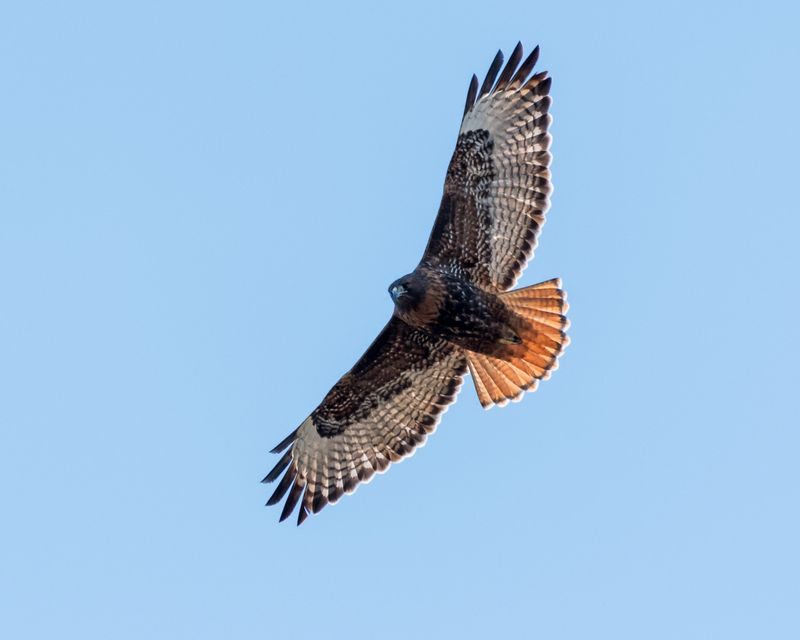
Known for their distinctive red tails, these hawks are often spotted soaring effortlessly across open fields and highways. Their cry is iconic in many films, lending an air of mystery and wilderness to the American landscape.
With broad wings and a keen eye, the red-tailed hawk is a master of the skies. Whether perched atop a tree or diving for prey, it embodies strength and grace.
Did you know? The red-tailed hawk’s call is often used in movies to represent all raptors, regardless of species.
Cooper’s Hawk
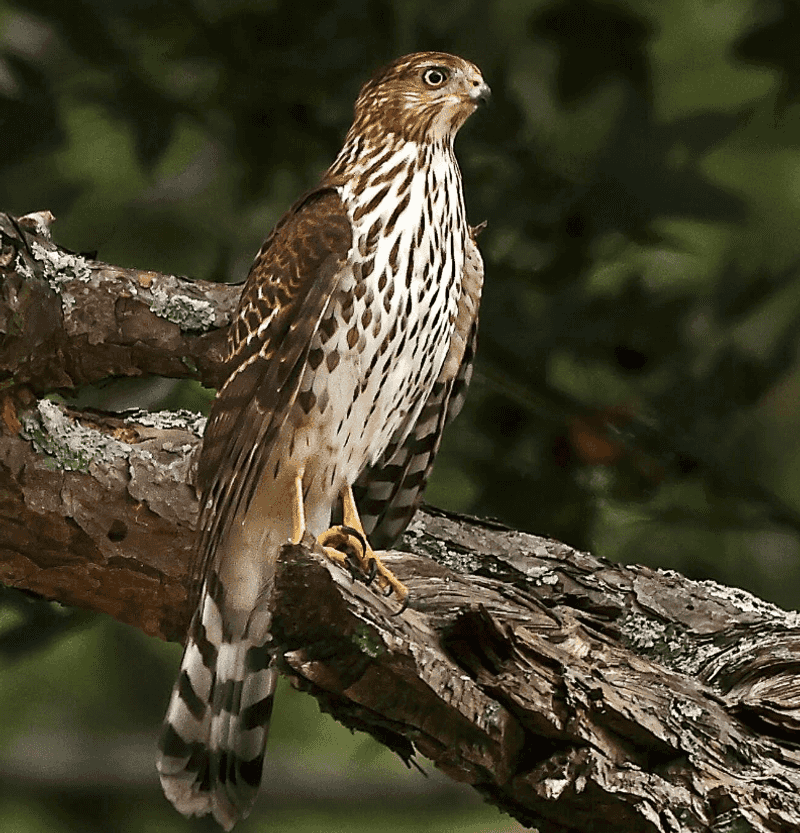
Stealthy and agile, Cooper’s hawks are adept hunters of small birds and mammals. Their short wings and long tails enable quick maneuvers through dense woods and urban settings.
These hawks often choose tree-lined streets and backyards as their hunting grounds, blending into the suburban backdrop.
With piercing eyes and a hooked beak, they are formidable predators, yet remain unseen by many. Whether silently perched or on the hunt, Cooper’s hawk exudes a quiet charisma.
Sharp-shinned Hawk
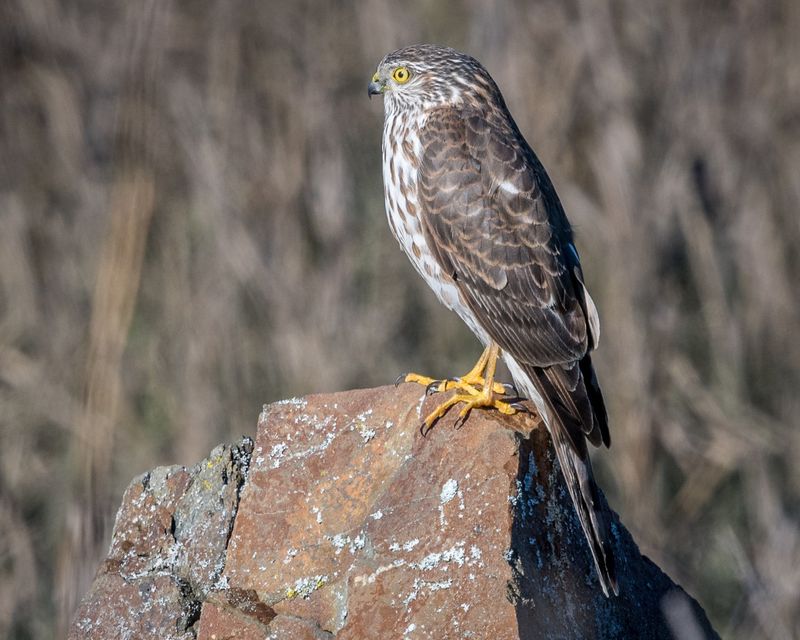
Small yet fierce, the sharp-shinned hawk is a master of stealth and speed. With its small size and incredible agility, it can dart through trees in pursuit of prey.
Often mistaken for the larger Cooper’s hawk, this raptor is a frequent visitor to bird feeders, where it surprises unsuspecting prey.
The sharp-shinned hawk’s intense gaze and sharp talons make it a formidable hunter, embodying the essence of nature’s efficiency and precision.
Northern Harrier
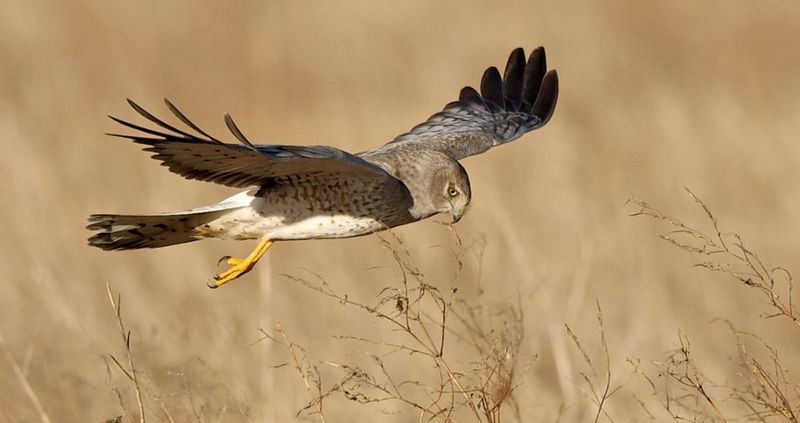
Gliding low over marshes and grasslands, the Northern Harrier’s unique hunting style sets it apart. With an owl-like face, it uses keen hearing to detect prey.
The harrier’s slow, graceful flight is both a beautiful and deadly dance. Its distinctive white rump patch flashes as it twists and turns.
This bird is a true nomad, moving with the seasons and the food supply. Often unnoticed in open fields, the Northern Harrier is a master of its craft.
Broad-winged Hawk
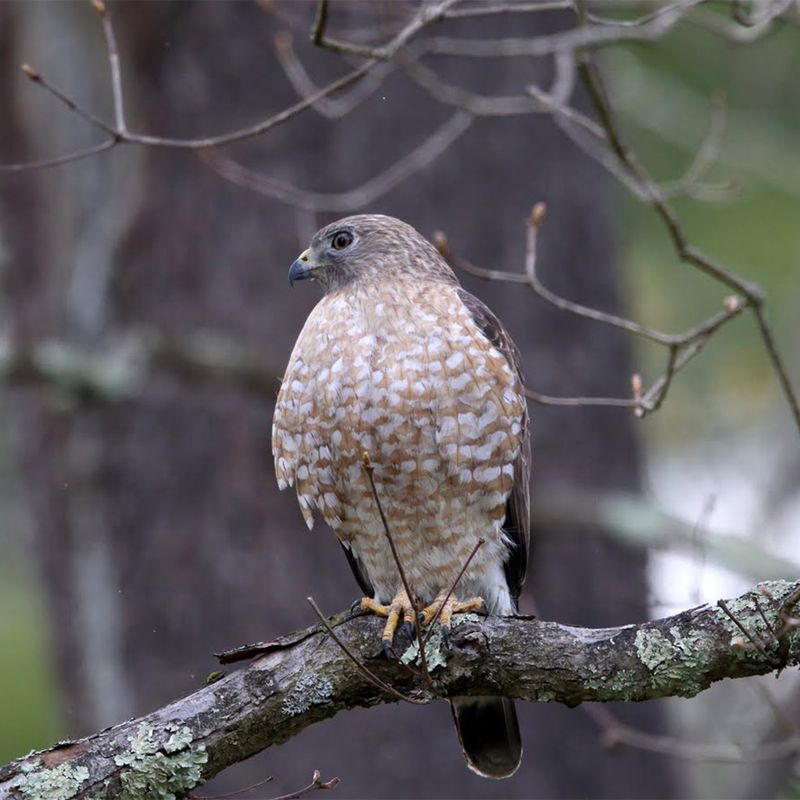
Famous for their spectacular migratory flocks, broad-winged hawks travel thousands of miles each year. When not on the move, they inhabit forests rich in prey and cover.
Their distinctive high-pitched whistle can be heard echoing through woodlands. With broad wings and a stout body, they are built for soaring and gliding.
The broad-winged hawk exemplifies the marvel of migration, a phenomenal journey shared with countless other birds. Watching them migrate is a reminder of nature’s grand cycles.
Swainson’s Hawk
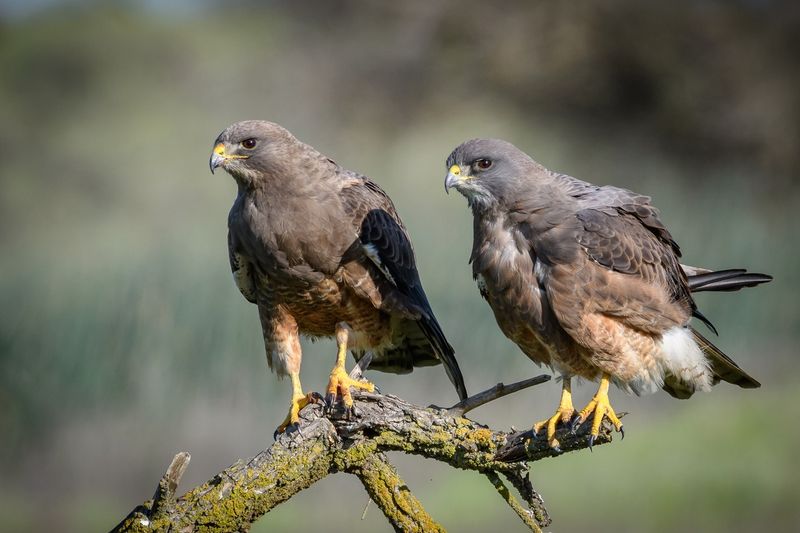
Swainson’s hawks are unique among raptors, with a preference for grasshoppers and crickets during the summer. Their long, pointed wings make them exceptional gliders.
These hawks are often seen in open prairies and fields, where they scan the ground for insects or small mammals.
Their migration is one of the longest among American raptors, traveling to Argentina for the winter. Swainson’s hawks are a testament to adaptability and survival across vast landscapes.
Ferruginous Hawk
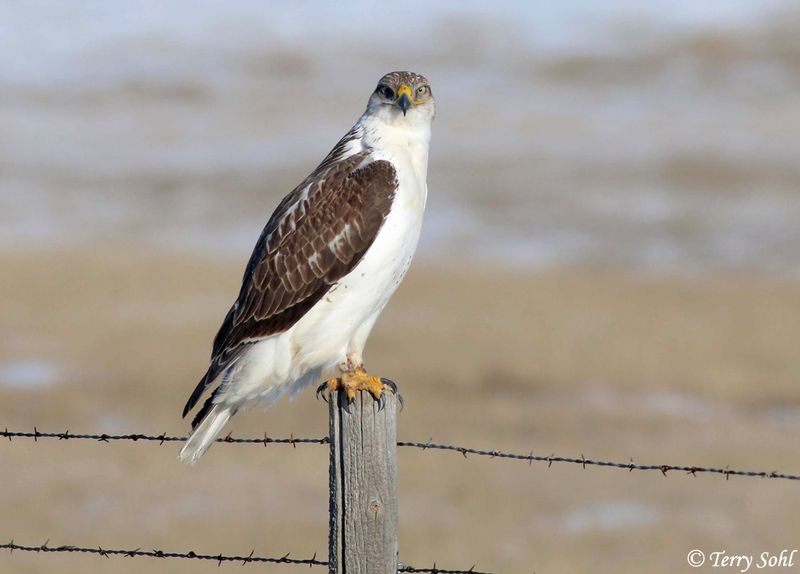
The ferruginous hawk, with its rust-colored plumage, is a true icon of the western plains. Its large size and broad wings make for powerful flight.
This hawk prefers open spaces, where it can hunt for rabbits and rodents. Its pale underbelly and wide wings give it a ghostly appearance against the sky.
Despite its size, the ferruginous hawk’s gentle demeanor makes it a fascinating subject for birdwatchers. It’s a reminder of the wild, open spaces of the American West.
Rough-legged Hawk

Adapted to cold climates, the rough-legged hawk is a winter visitor to the northern United States. Its feathered legs offer protection against freezing temperatures.
Often seen hovering over fields, this hawk uses its keen vision to locate voles and mice beneath the snow.
The rough-legged hawk’s presence is a sign of winter’s embrace, as it migrates south from the arctic tundra. Its subtle beauty and resilience are a testament to nature’s adaptability.
Zone-tailed Hawk
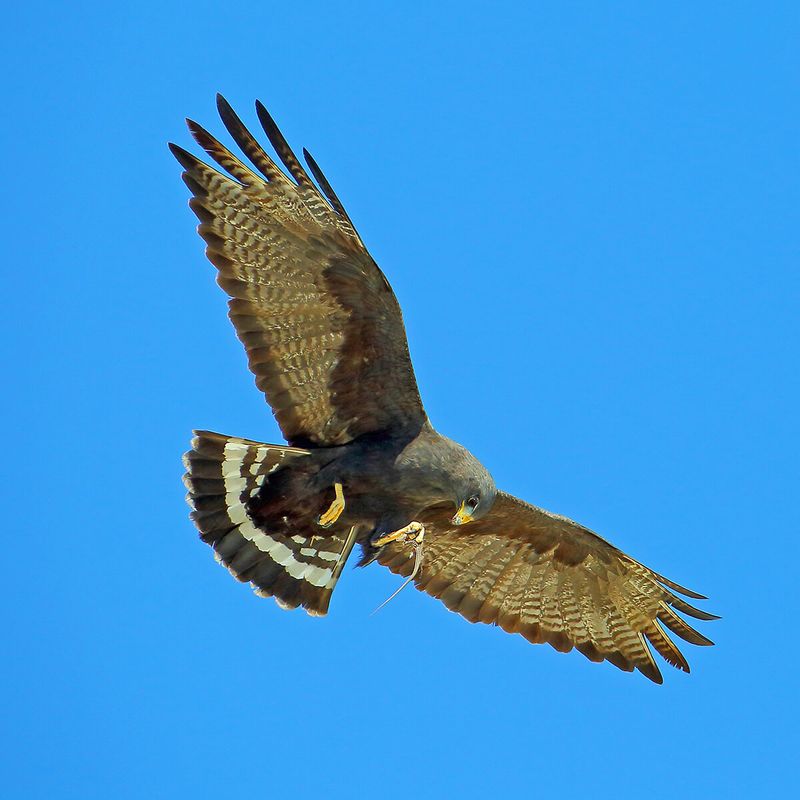
Mimicry is the zone-tailed hawk’s unique gift. By resembling turkey vultures, it deceives potential prey, allowing it to hunt with surprising effectiveness.
This hawk’s dark plumage and subtle wing bands are its camouflage in the skies. Found mainly in the southwestern U.S., it thrives in rugged terrain.
The zone-tailed hawk’s clever disguise is a masterstroke of evolution, highlighting how appearances can be deceiving in the natural world.
Harris’s Hawk
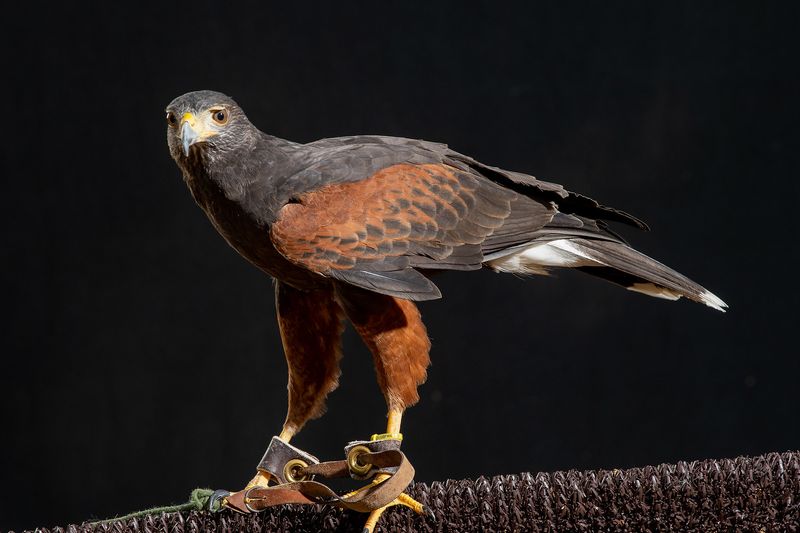
Harris’s hawks are social raptors, often hunting in groups. This cooperative behavior is rare among birds of prey.
Their striking plumage of chocolate brown with chestnut shoulders makes them stand out in desert environments.
Famous for their intelligence and teamwork, Harris’s hawks provide a glimpse into the complex social structures possible in the avian world. They are a favorite among falconers for their trainability and engaging personalities.
Grey Hawk
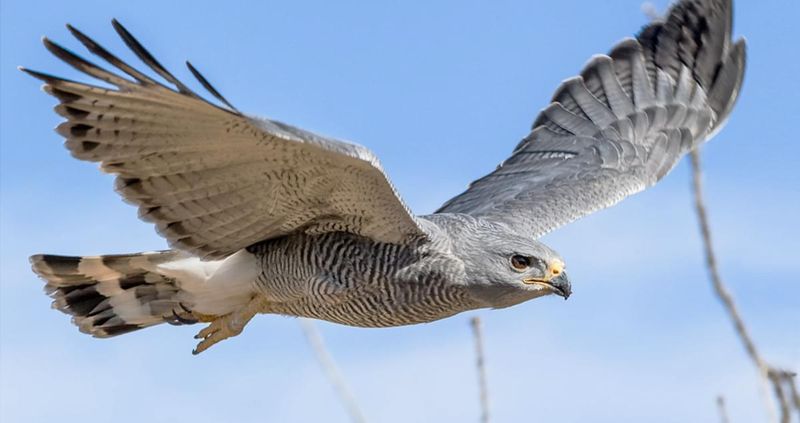
The grey hawk’s subtle beauty is best appreciated when seen up close. Its soft grey feathers blend seamlessly into its woodland habitat.
This hawk is a patient hunter, waiting quietly on branches before striking. Found mainly in the southern U.S., it often escapes notice due to its elusive nature.
The grey hawk’s quiet persistence and camouflage make it a master of stealth in the avian world, a true ghost of the forests.
Red-shouldered Hawk
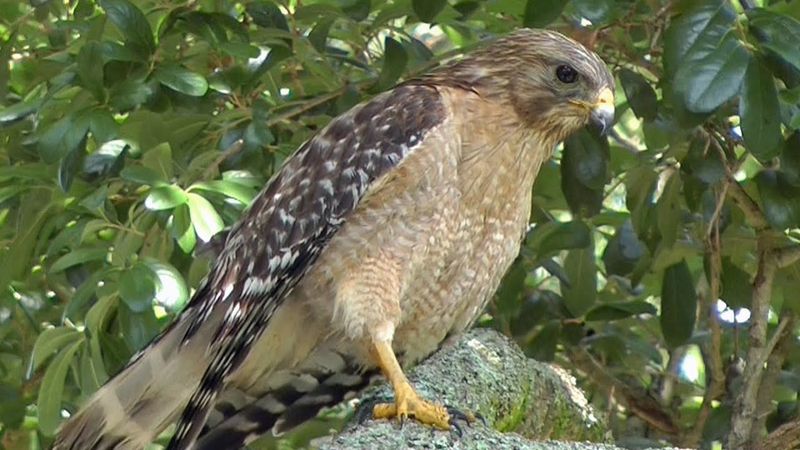
Vocal and striking, the red-shouldered hawk is often heard before it’s seen. Its call is a loud “kee-ah,” echoing across wooded areas.
With its distinctive reddish shoulders and banded tail, it’s a visual treat for bird enthusiasts. This hawk thrives near rivers and swamps, where it hunts for amphibians and reptiles.
The red-shouldered hawk is a symbol of healthy wetlands, its presence a sign of a thriving ecosystem.
Short-tailed Hawk
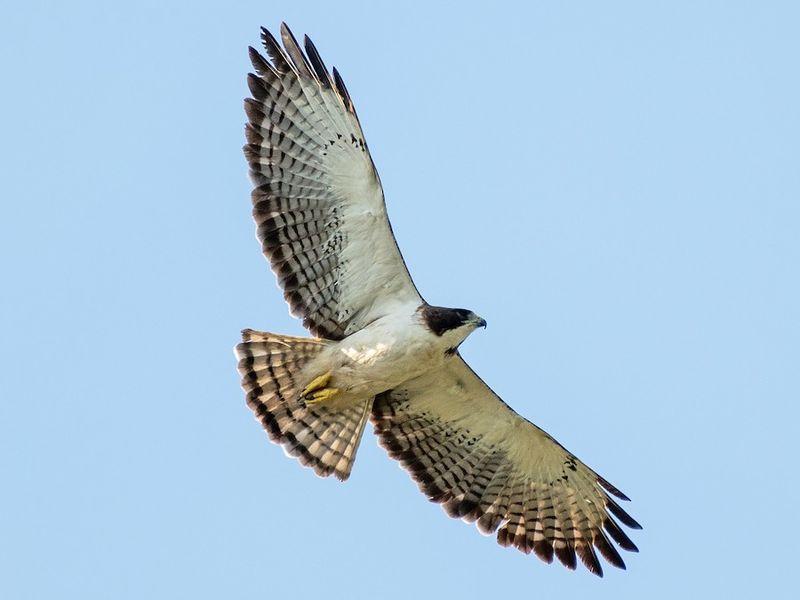
Short-tailed hawks are rare and elusive, predominantly found in Florida. They come in two color morphs, light and dark, adding to their mystique.
Their hunting technique involves soaring above the canopy, suddenly diving on unsuspecting prey below.
The short-tailed hawk’s dual coloration and stealthy hunting make it a captivating subject for those lucky enough to spot them. Its presence is a reminder of the hidden wonders within America’s skies.

